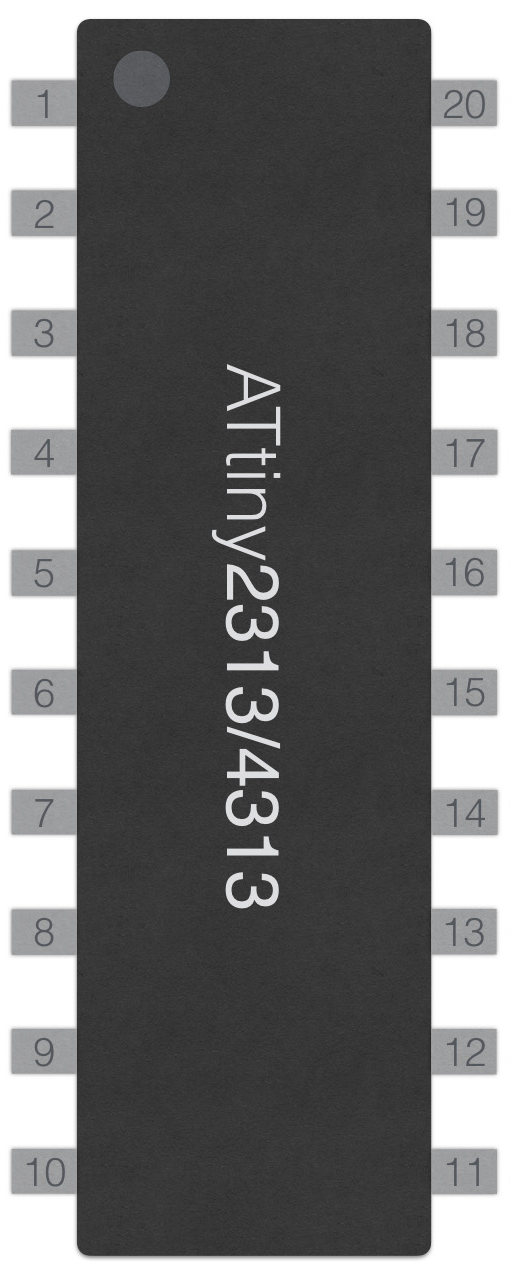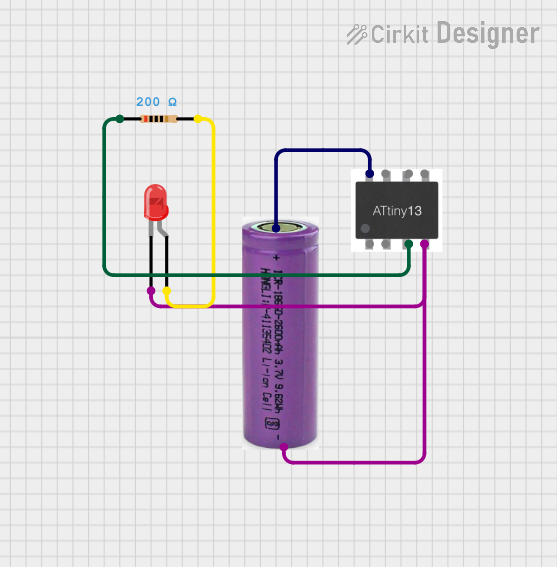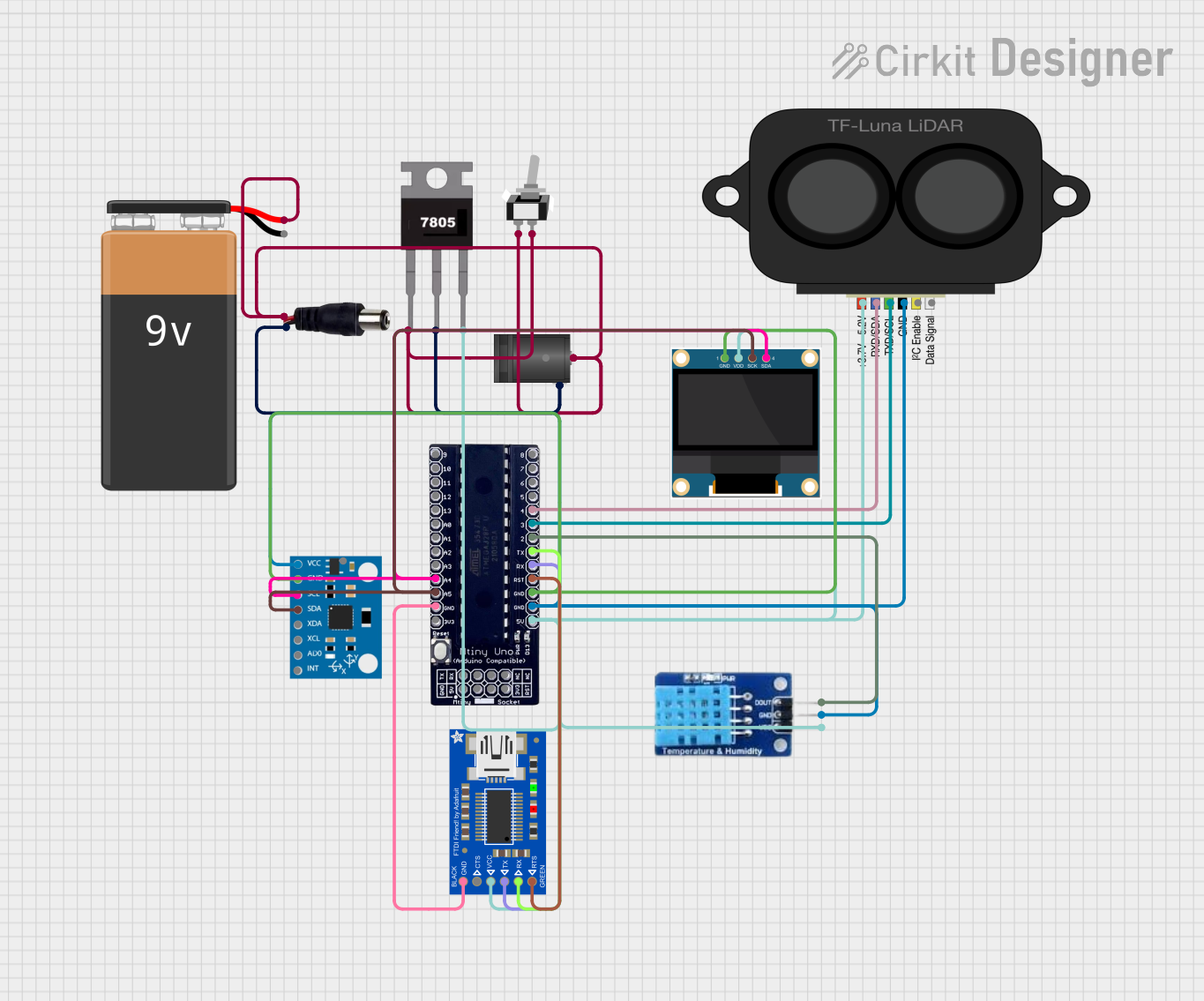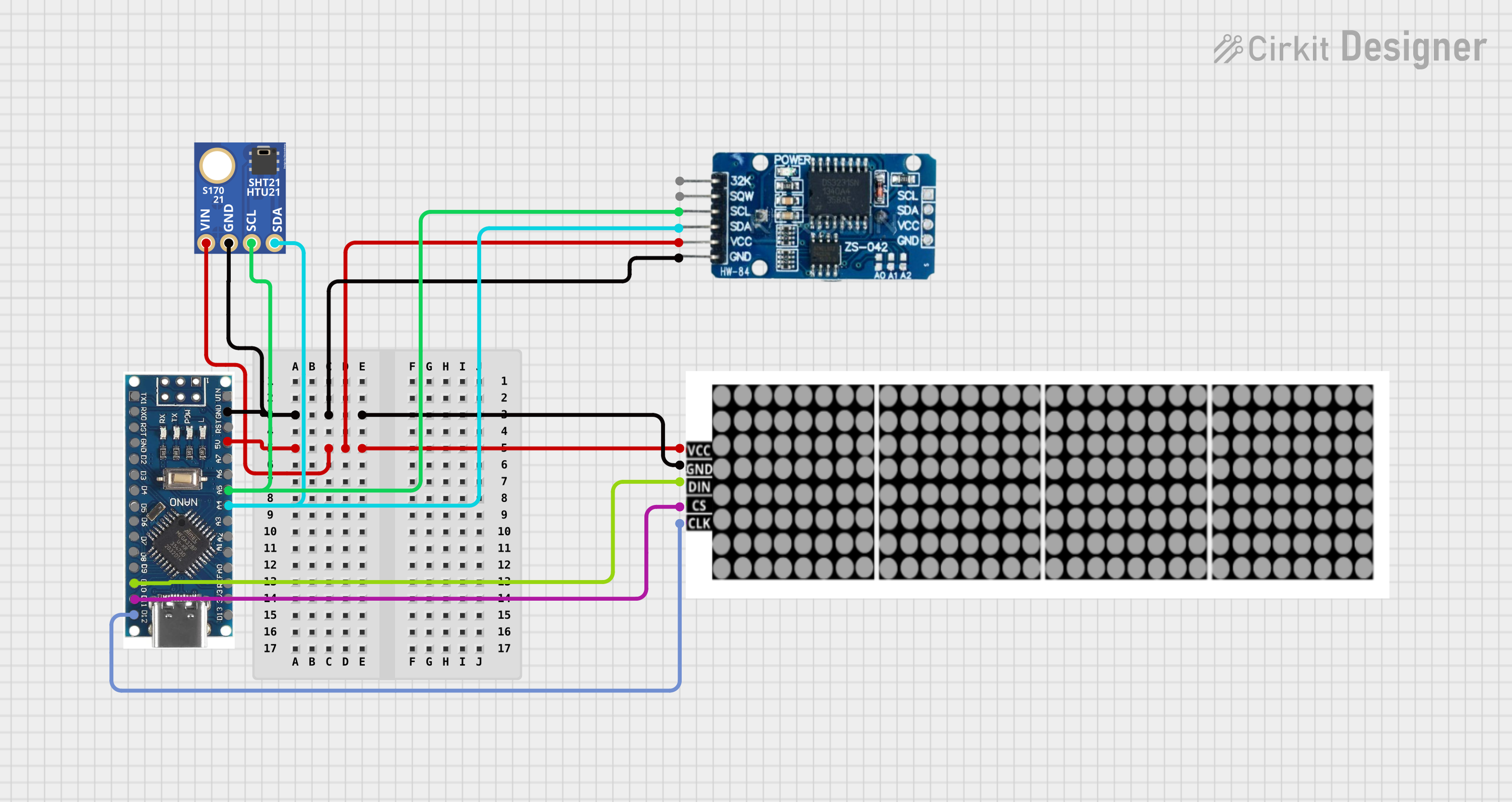
How to Use ATtiny2313: Examples, Pinouts, and Specs

 Design with ATtiny2313 in Cirkit Designer
Design with ATtiny2313 in Cirkit DesignerIntroduction
The ATtiny2313 is a low-power 8-bit microcontroller from the AVR family, designed for efficient and compact embedded systems. It features 2KB of flash memory, 128 bytes of SRAM, and 16 general-purpose I/O pins, making it ideal for small-scale applications requiring reliable control and data processing. Its compact size and versatile functionality make it a popular choice for hobbyists and professionals alike.
Explore Projects Built with ATtiny2313

 Open Project in Cirkit Designer
Open Project in Cirkit Designer
 Open Project in Cirkit Designer
Open Project in Cirkit Designer
 Open Project in Cirkit Designer
Open Project in Cirkit Designer
 Open Project in Cirkit Designer
Open Project in Cirkit DesignerExplore Projects Built with ATtiny2313

 Open Project in Cirkit Designer
Open Project in Cirkit Designer
 Open Project in Cirkit Designer
Open Project in Cirkit Designer
 Open Project in Cirkit Designer
Open Project in Cirkit Designer
 Open Project in Cirkit Designer
Open Project in Cirkit DesignerCommon Applications and Use Cases
- Home automation systems
- IoT devices and sensors
- Motor control and robotics
- LED control and lighting systems
- Data acquisition and processing
- Educational projects and prototyping
Technical Specifications
The ATtiny2313 is a robust microcontroller with the following key specifications:
| Parameter | Value |
|---|---|
| Architecture | 8-bit AVR |
| Flash Memory | 2KB |
| SRAM | 128 bytes |
| EEPROM | 128 bytes |
| Operating Voltage | 2.7V to 5.5V |
| Clock Speed | Up to 20 MHz |
| I/O Pins | 16 general-purpose I/O pins |
| Timers | 1 x 8-bit, 1 x 16-bit |
| Communication Interfaces | UART, SPI, I2C (TWI) |
| Package | 20-pin PDIP, SOIC, or QFN |
Pin Configuration and Descriptions
The ATtiny2313 has 20 pins, each with specific functions. Below is the pinout description:
| Pin Number | Pin Name | Description |
|---|---|---|
| 1 | RESET | Reset input (active low) |
| 2 | RXD | UART Receive |
| 3 | TXD | UART Transmit |
| 4 | XTAL1 | External clock/crystal input |
| 5 | XTAL2 | External clock/crystal output |
| 6 | PD2 | General-purpose I/O |
| 7 | PD3 | General-purpose I/O |
| 8 | PD4 | General-purpose I/O |
| 9 | VCC | Power supply (2.7V to 5.5V) |
| 10 | GND | Ground |
| 11 | PB0 | General-purpose I/O |
| 12 | PB1 | General-purpose I/O |
| 13 | PB2 | General-purpose I/O |
| 14 | PB3 | General-purpose I/O |
| 15 | PB4 | General-purpose I/O |
| 16 | PB5 | General-purpose I/O |
| 17 | PB6 | General-purpose I/O |
| 18 | PB7 | General-purpose I/O |
| 19 | AVCC | Analog power supply |
| 20 | AREF | Analog reference for ADC (if used) |
Usage Instructions
How to Use the ATtiny2313 in a Circuit
- Power Supply: Connect the VCC pin to a regulated power source (2.7V to 5.5V) and the GND pin to ground.
- Clock Source: Use the internal 8 MHz oscillator or connect an external crystal oscillator to XTAL1 and XTAL2.
- Programming: Use an AVR programmer (e.g., USBasp) to upload code via the ISP interface.
- I/O Configuration: Configure the I/O pins as input or output in the firmware using the DDRx registers.
- Communication: Utilize UART, SPI, or I2C for interfacing with other devices.
Important Considerations and Best Practices
- Decoupling Capacitors: Place a 0.1 µF capacitor between VCC and GND to reduce noise.
- Pull-up Resistors: Use pull-up resistors on the RESET pin to prevent accidental resets.
- Clock Selection: For precise timing, use an external crystal oscillator.
- Pin Protection: Avoid exceeding the voltage and current limits on I/O pins (max 40 mA per pin).
Example: Blinking an LED with ATtiny2313
Below is an example of how to blink an LED connected to pin PB0 using the ATtiny2313. This code can be written in AVR C and uploaded using an ISP programmer.
#include <avr/io.h>
#include <util/delay.h>
#define LED_PIN PB0 // Define the LED pin as PB0
int main(void) {
DDRB |= (1 << LED_PIN); // Set PB0 as an output pin
while (1) {
PORTB |= (1 << LED_PIN); // Turn the LED on
_delay_ms(500); // Wait for 500 milliseconds
PORTB &= ~(1 << LED_PIN); // Turn the LED off
_delay_ms(500); // Wait for 500 milliseconds
}
return 0; // This line will never be reached
}
Using ATtiny2313 with Arduino UNO as a Programmer
The ATtiny2313 can be programmed using an Arduino UNO as an ISP (In-System Programmer). Follow these steps:
- Connect the Arduino UNO to the ATtiny2313:
- Arduino Pin 10 → ATtiny2313 RESET
- Arduino Pin 11 → ATtiny2313 MOSI (PB5)
- Arduino Pin 12 → ATtiny2313 MISO (PB6)
- Arduino Pin 13 → ATtiny2313 SCK (PB7)
- Arduino GND → ATtiny2313 GND
- Arduino 5V → ATtiny2313 VCC
- Load the "ArduinoISP" sketch onto the Arduino UNO.
- Use the Arduino IDE to upload your code to the ATtiny2313 by selecting "Upload Using Programmer."
Troubleshooting and FAQs
Common Issues
Microcontroller Not Responding:
- Ensure the power supply is stable and within the operating voltage range.
- Check the RESET pin for proper pull-up resistor configuration.
- Verify the connections between the programmer and the ATtiny2313.
Code Upload Fails:
- Confirm that the correct microcontroller is selected in the programming software.
- Ensure the ISP connections (MOSI, MISO, SCK, RESET) are secure.
- Check for conflicting devices on the SPI bus.
Unexpected Behavior in Circuit:
- Verify that the I/O pins are correctly configured in the code.
- Check for short circuits or incorrect wiring.
- Ensure decoupling capacitors are properly placed.
Tips for Troubleshooting
- Use a multimeter to check voltage levels and continuity.
- Test the circuit with a simple program (e.g., blinking an LED) to verify basic functionality.
- Double-check the fuse settings if using an external clock source.
By following this documentation, you can effectively utilize the ATtiny2313 in your projects and troubleshoot common issues with ease.